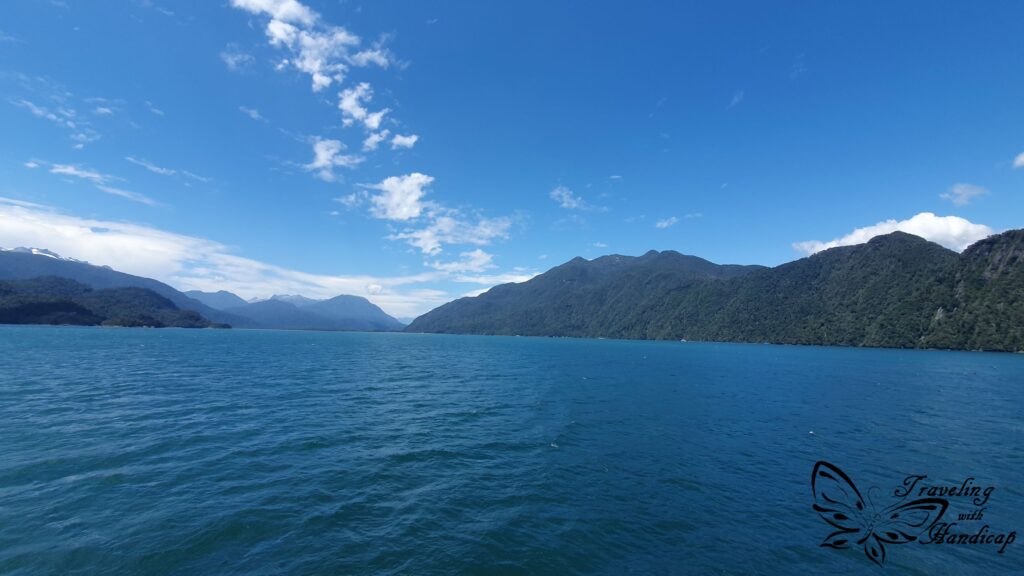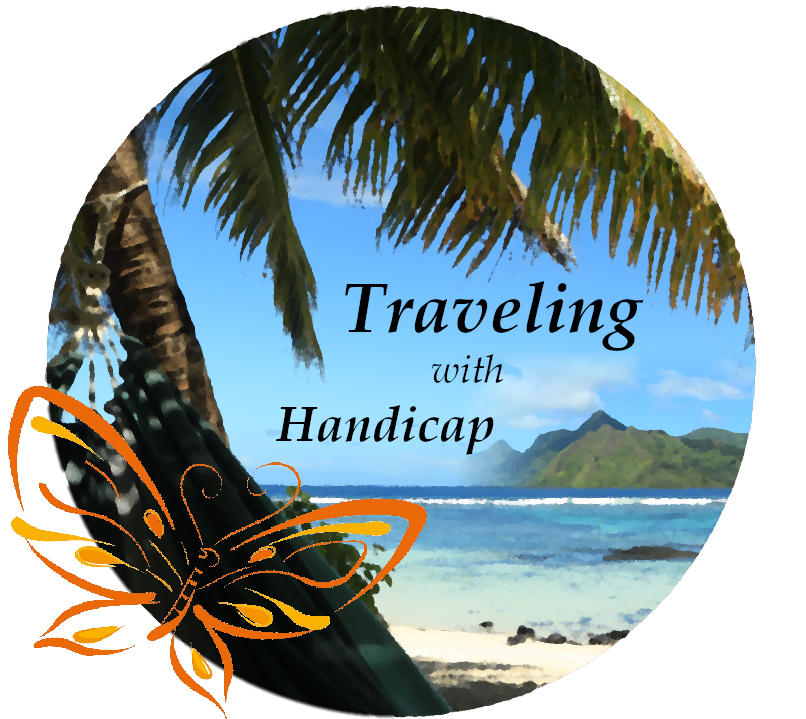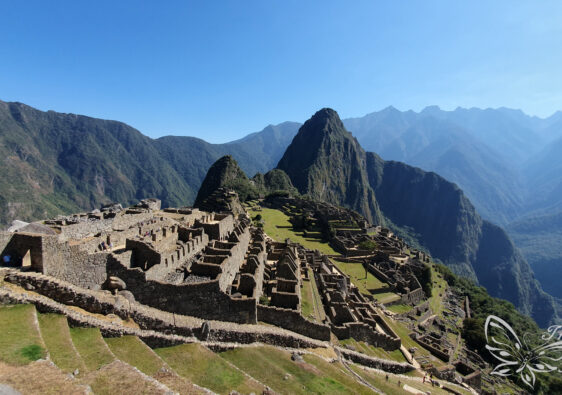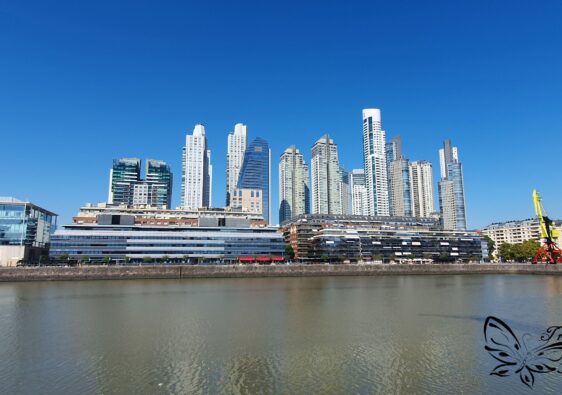Real freedom lies in wilderness, not in civilization
Charles Lindbergh
What is the Carretera Austral
Simply, a road through Chilean Patagonia, passing amazing landscapes. In short: a dream road. Beyond the Torres del Paine national park, the Carretera Austral (R7) was another must-do point on my list for Chile. This road connects Puerto Montt on its northern with Villa O’Higgins on its southern end. The Carretera Austral also consists of parts to be crossed by ferry. Since ferries have a limited capacity, those have to be pre-booked early.
The Carretera is paved in parts, in better condition northwards. In the south, at least south of Coyhaique, there are many parts of gravel road, in better or worse condition (also weather-dependent). There are some small towns and villages along the way, free and paid camp spots, and also some side-tracks to do as return-trips (mostly gravel road). Most of the local people drive 4×4 pick-ups (the most useful car for the conditions, in my opinion). Moreover, there are some bus connections available along the Carretera.
While driving, you cannot stop at every point, only at pull-offs for view points. The surrounding is scenic everywhere, not only at the view points. 😉 Of course, buses don’t stop at view points. However, as you are not driving, you can truly watch the surroundings through the windows. Often, the windows are too dirty for good pics through them, though.
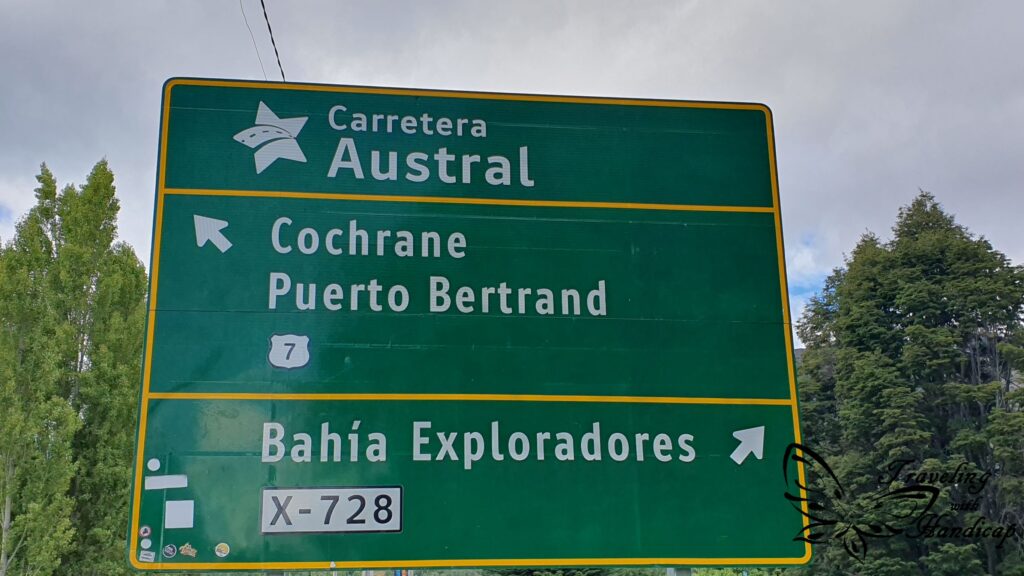

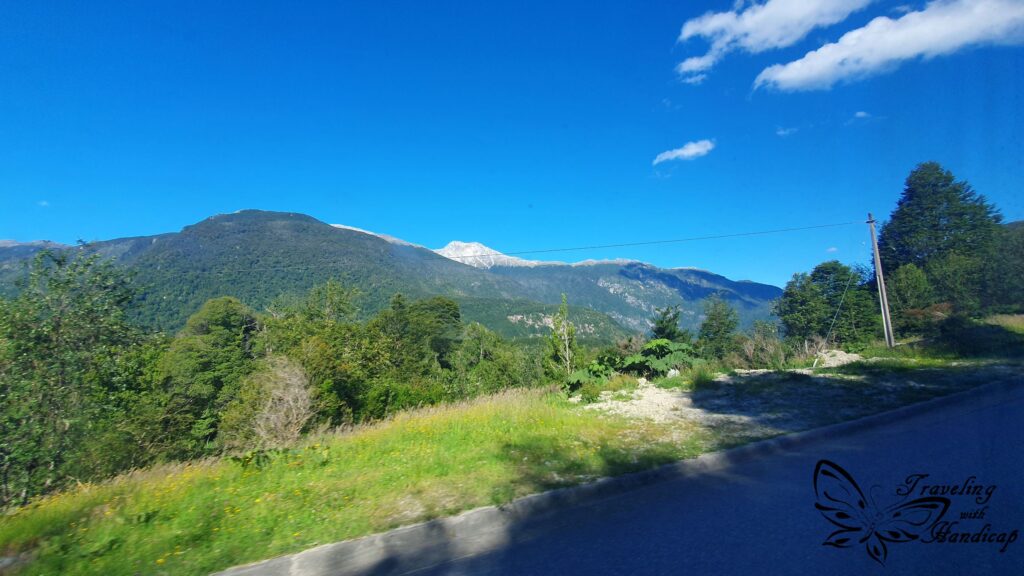
Preparations and organization
Doing the Carretera Austral needs to be prepared. This includes to know which things cannot be pre-planned. The first essential consideration is the traveling time: if you want to go on fixed dates during high season (December to February), you have to reserve cars quite early. Many people start from Puerto Montt since there is a domestic airport as well as many car rental agencies. It’s also indispensable to have a Chilean sim card with data volume, since you won’t find many places offering Wi-Fi along the road.
The road
On the following map, you see the Carretera Austral from Puerto Montt to Villa O’Higgins marked in blue. As well, a possible route back through Argentina (if you have to return your car in Puerto Montt) in gray. The Carretera consists of three main sections:
- Northern: Puerto Montt ↔ Villa Santa Lucia
- Classic: Villa Santa Lucia ↔ Cruce el Maitén
- Southern: Cruce el Maitén / Puerto Bertrand ↔ Villa O’Higgins.
If you consider the classic section, you most likely also do the northern one. The southern section is rather a dead end, since the first road out (towards Argentina) is from Cruce el Maitén to Chile Chico (gravel). From Villa O’Higgins, there are a couple of ferries to get to a border crossing close to El Chaltén, however, only possible on foot, with longer walks.
I did the Classic and Northern sections of the Carretera Austral, taking a bus from El Chaltén to Los Antiguos at Lago Buenos Aires. This lake is called Lago General Carrera on Chilean side. From Los Antiguos, I crossed the border to Chile (Chile Chico). The two towns are not far away from each other, however, there is no (regular, if any) bus service, so the best way is hitchhiking. I was lucky, plenty of cars that day. Others are waiting at both the Argentinean and Chilean border until they get a lift.

The mode of transportation
If you are a couple or a group of friends, consider renting a car or camper. In this context, it’s truly the easiest way to do the Carretera Austral. Indeed, the clear majority of travelers are couples, along with some groups of friends. However, almost no solo travelers. As a solo traveler, a car might be too expensive. Then, you might take buses or hitchhike. Often, you cannot preplan the buses, as they don’t have a fixed schedule. Therefore, whenever you arrive at one location, stay at the bus station and figure out when the next bus will leave (and buy a ticket if possible).
Hitchhiking is very common along the Carretera Austral, even with couples. Sure, it’s comfortable and cheap if you get picked up and don’t have to pay for bus or car. However, you might have to wait for a couple of hours and lose the day /time for any other activities. Moreover, the weather is very unpredictable. So, in bad luck, you might have to wait in the rain to be picked up.


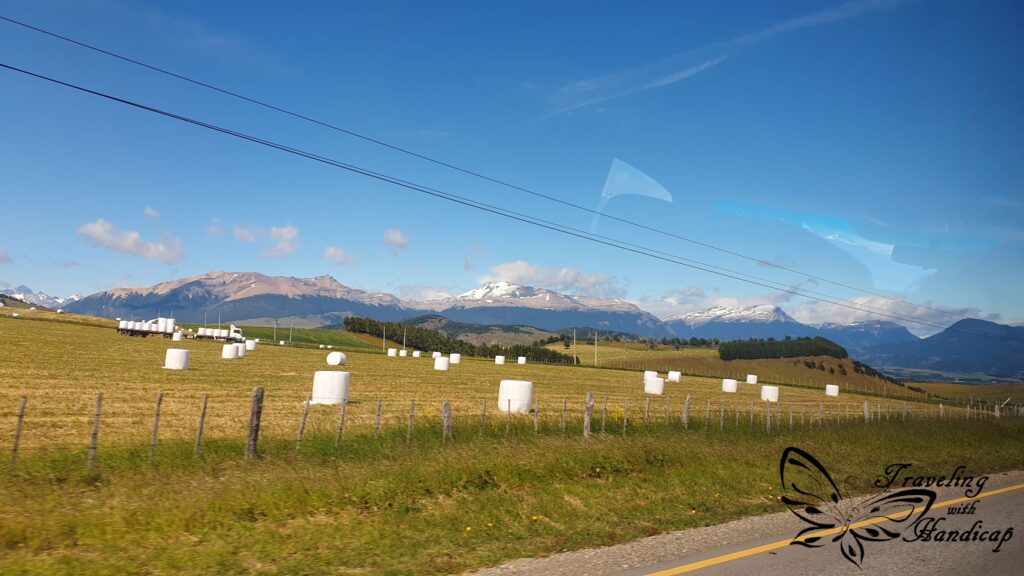
Where to stay
The villages along the Carretera Austral have plenty of Hostals and camping options. Hostals are guest houses (no hostels). As such, the majority of sleeping options is set up as twin rooms or for more people. If you are traveling in a van, you might use MyMaps to locate free camp spots. As a solo traveler, paying for twin rooms all the time is rather expensive. Therefore, you might camp (usually fees per person).
Another option is to contact hostals through WhatsApp and negotiate for discounts, to get the twin room for a reduced price. I have to mention that due to Chile’s way of handling CoVid19, many hostals didn’t survive the lockdown or have not reopened yet. Sure, there are not as many travelers this season, so it’s indeed easier to negotiate for discounts. This might not be possible during more busy seasons. I’ve often been told that certain bus services or accommodation options didn’t reopen yet, and would restart again next season (2023/24) if possible.





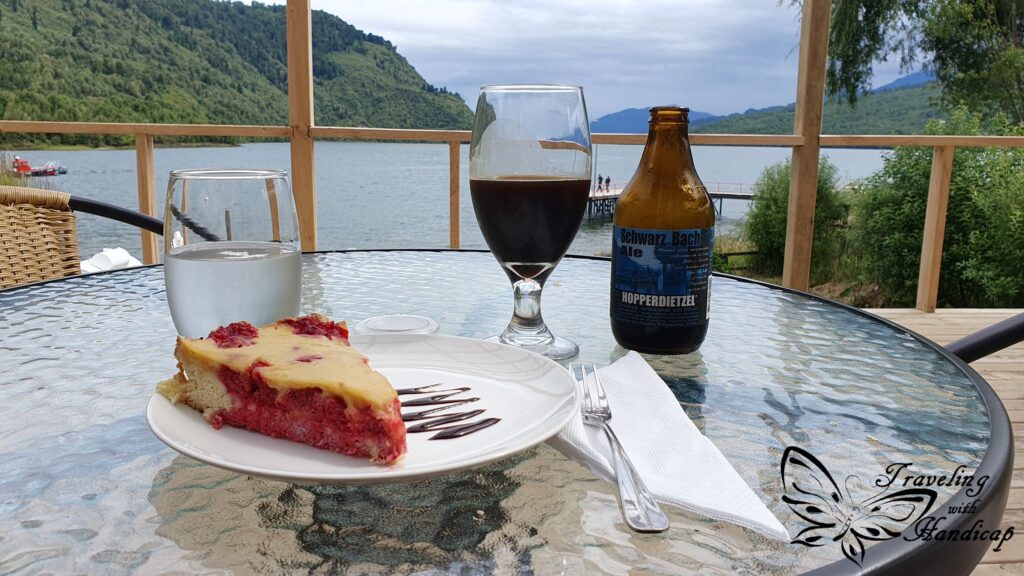
My stops along the Carretera Austral
I did the classic and north sections from south to north. Renting a car was both too expensive and too difficult to pre-plan. During low season, I might have rented a car (cheaper rates and not as crowded). I consider Chile Chico as the start, even though the gravel road from Chile Chico to Cruce el Maitén is considered a “side track”. A very beautiful one not to be missed in my opinion.
Chile Chico
The town
… is a tiny town next to Los Antiguos. Sure, its location right at the Lago General Carrera is amazing. However, it rather feels like Chile Chico had been founded in order to have a town next to Los Antiguos on the Chilean side. There is a ferry from Chile Chico crossing the lake towards Puerto Ibañez (from where you can also cross to Argentina via Paso Huemules), close to the Balmaceda airport. I didn’t take that ferry because the most scenic ride is the gravel road from Chile Chico to Puerto Rio Tranquilo.
Apart from the one main road with some shops and supermarkets, there is nothing going on in town. At night, I felt like being in a town in the wild west, as I would imagine it a hundred years ago. Nobody on the road during sunset, all shops locked, almost no lights in houses. But blinking lights set up along the main road and the mountain next to it.
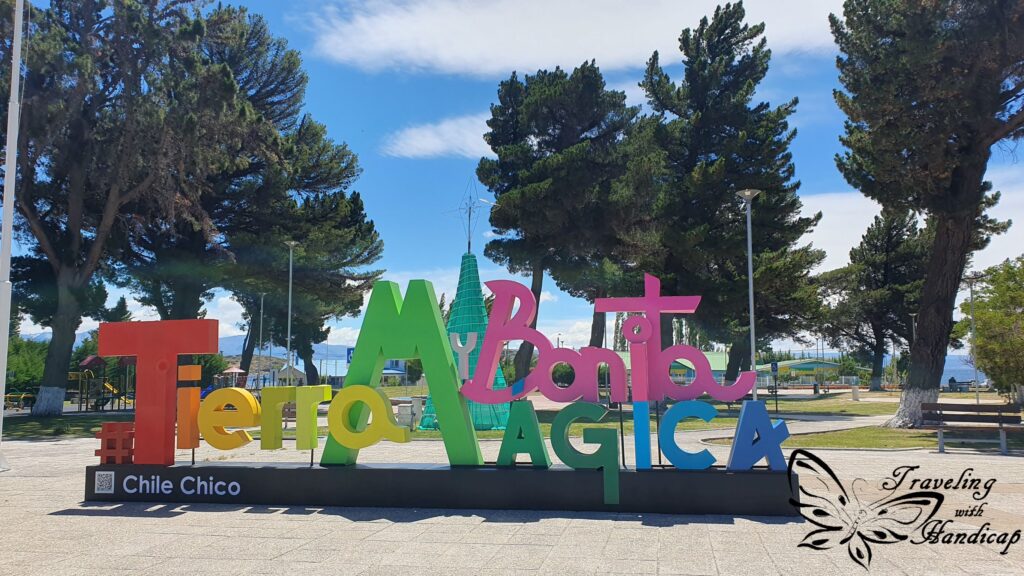


Bus from Chile Chico to Puerto Rio Tranquilo
The literally only café in town is located at the bus station. The waitress helped me to figure out when the next bus would be leaving town towards Puerto Rio Tranquilo. There are only a few, most to Cochrane. Nevertheless, I was lucky, a direct bus the next day. One company just put a piece of paper onto their window with the respective information and a WhatsApp number to contact while I had my coffee. That’s how it works here to make reservations.
I was the only one on that minibus, so I asked the bus driver to make some photo-stops for me, and he agreed. He even made the tour guide. Interesting and scenic 4 hrs, the bumpy road didn’t bother me.
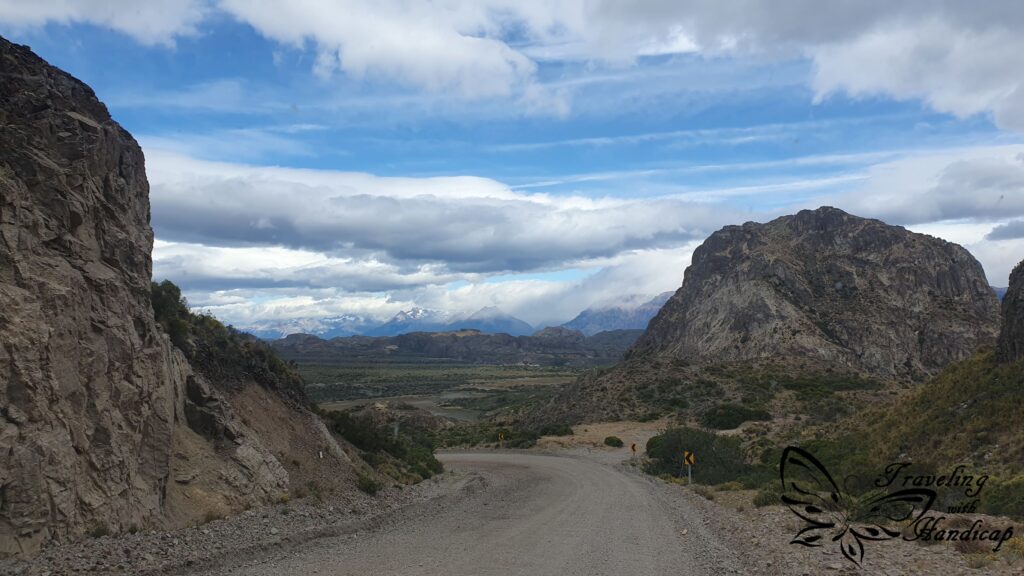

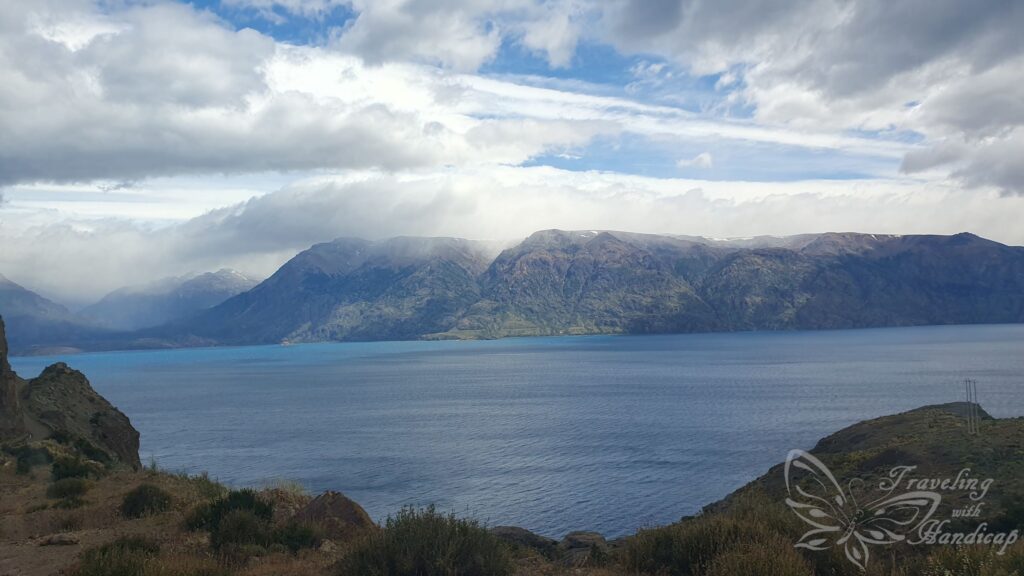


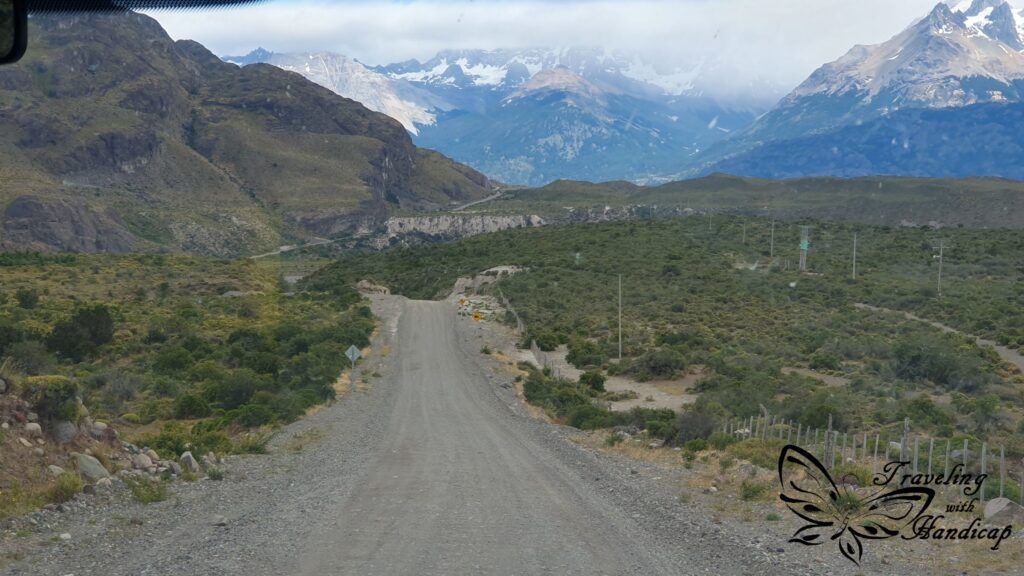

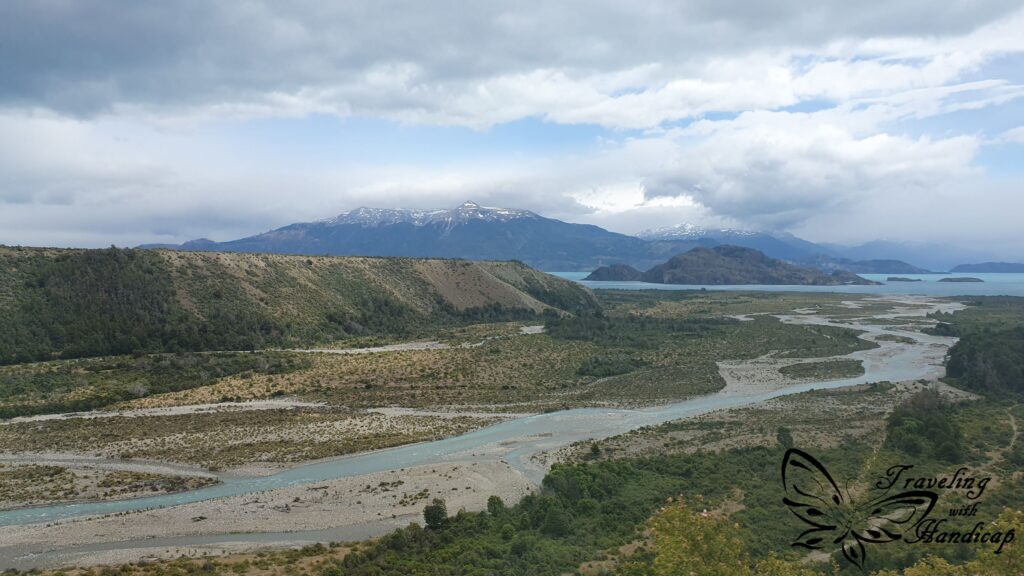
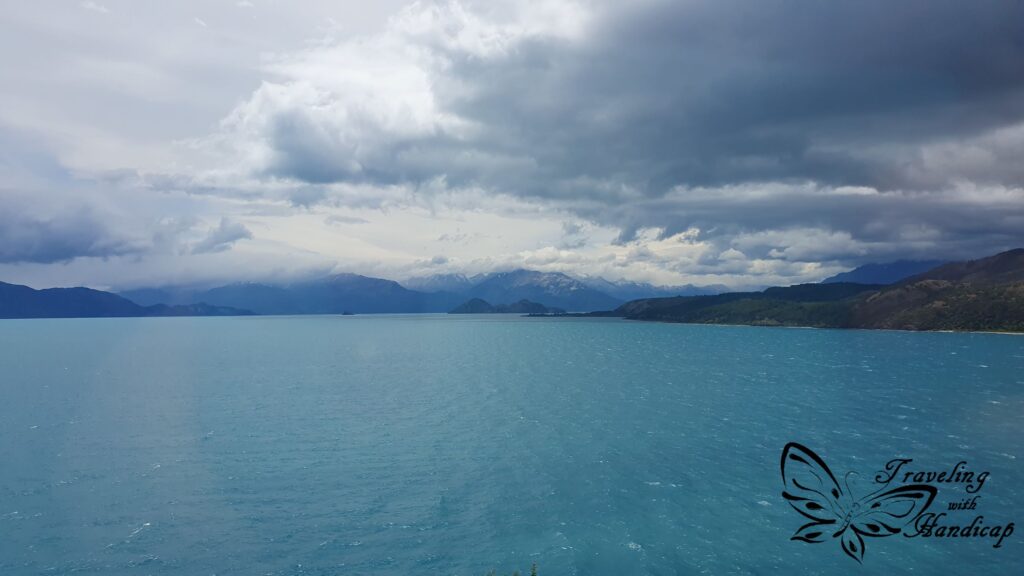

Puerto Rio Tranquilo
I stayed in Puerto Rio Tranquilo to visit the Marble Caves. If you are transiting by car, you might as well do this as a stopover. However, there are some hostals, hotels, camping, a cute super-tiny church, tiny super-markets and also a parking area for vans.
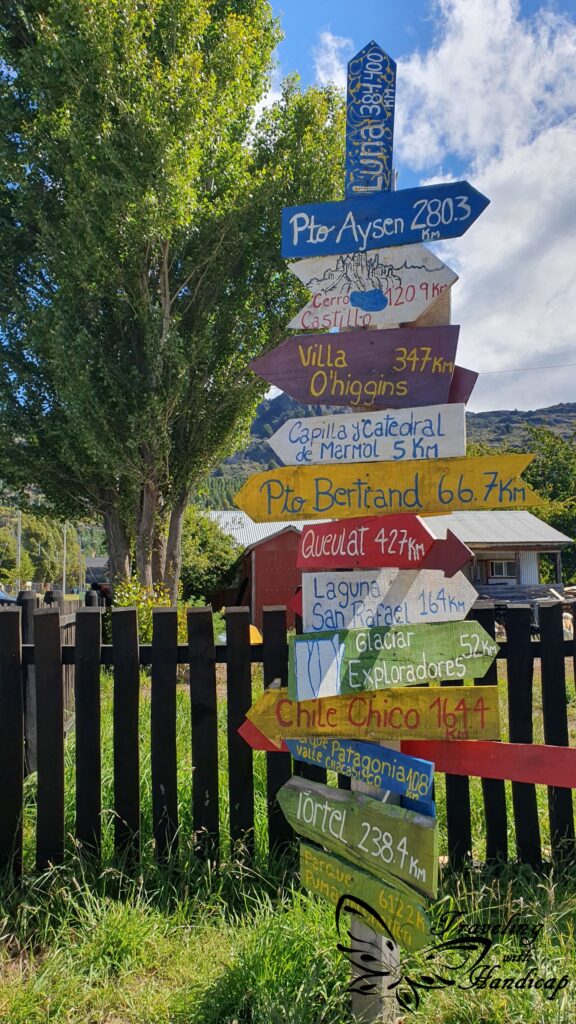
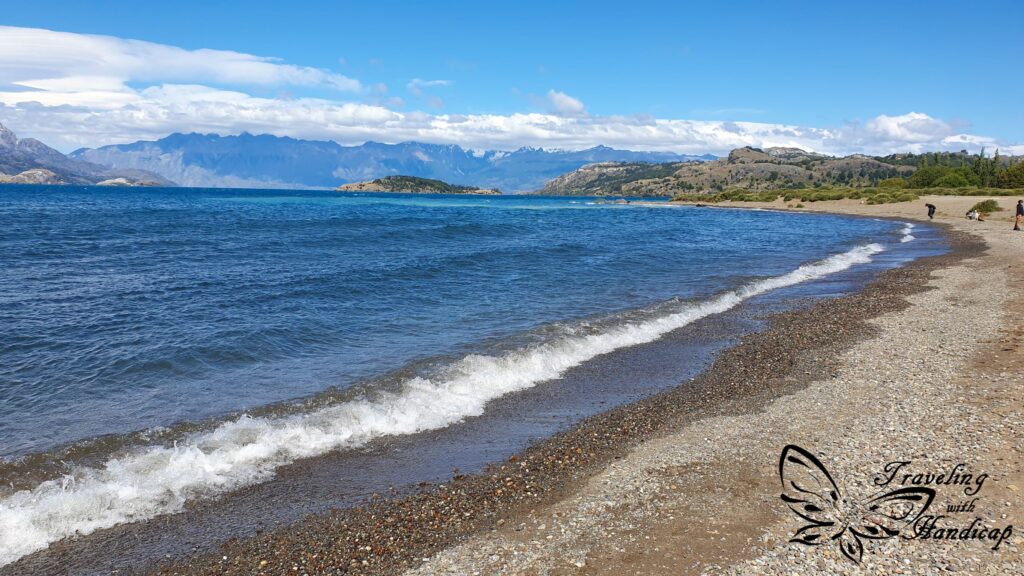

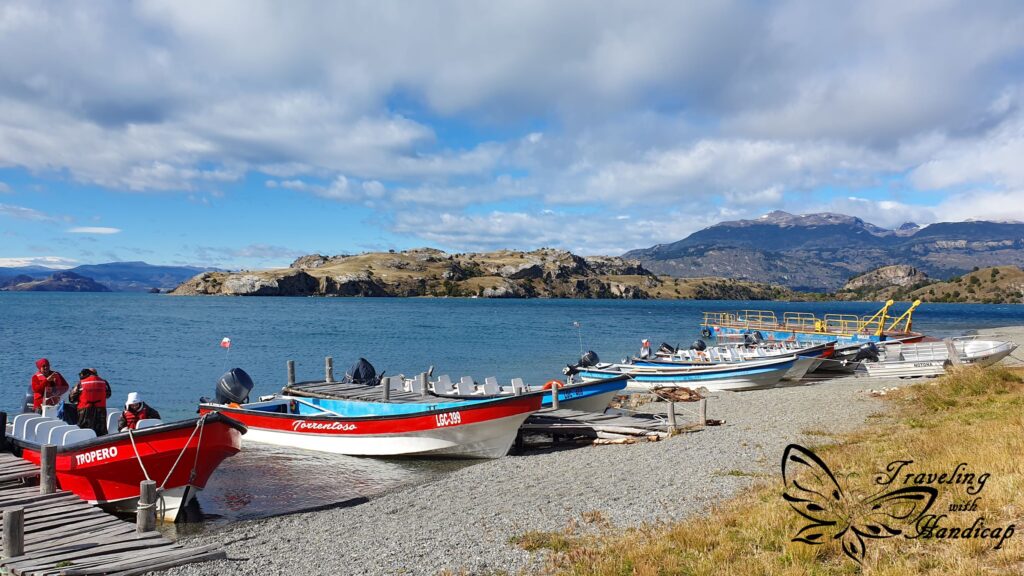

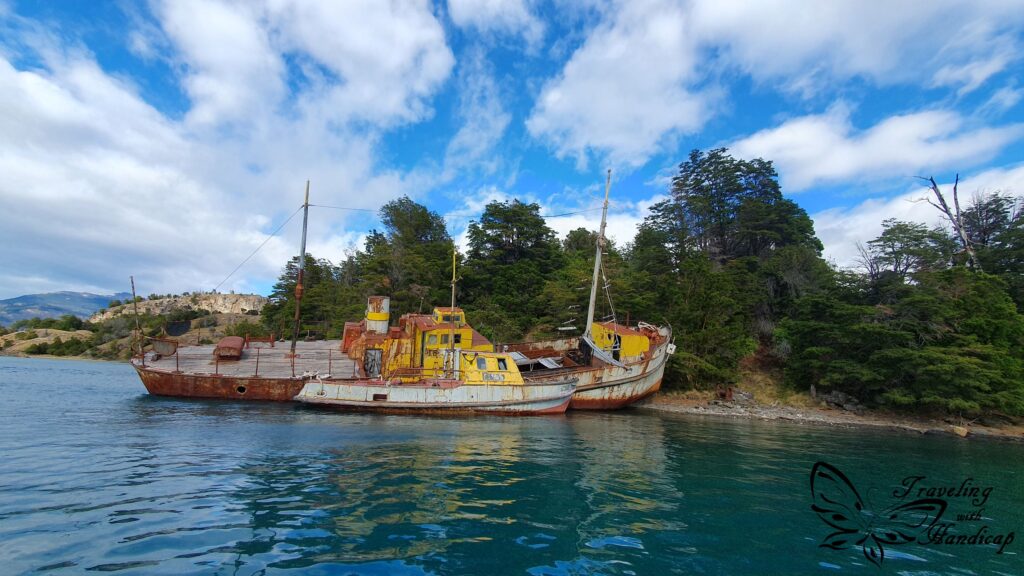
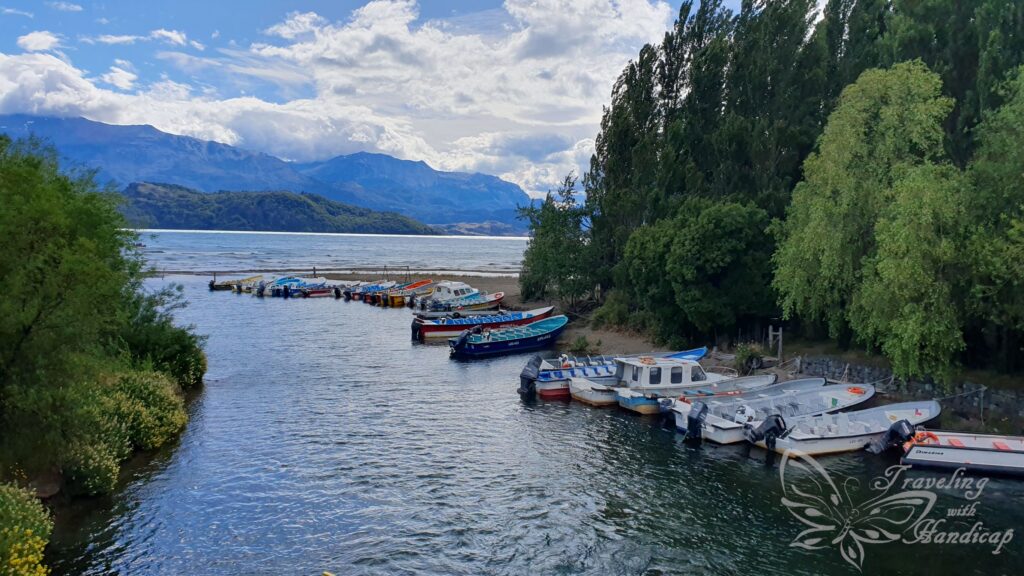

You might already realize that my preferred landscape is the combination of mountains and big lakes / the sea. I really liked Tranquilo and its atmosphere. I also had good weather all the time. It was quite windy, though, which made the boat trip to the caves a rather bumpy ride. Honestly, this was the reason I didn’t do the considered side-trip to Futaleufú further up north, which is famous for rafting. I’ve had the rafting included in the boat trip!
I’ve done the “full marble” tour (2.5 hrs) which included many marble caves, the capilla and also a stop in Puerto Sánchez, an even tinier village. A kayak tour would take 1 hr more, but you wouldn’t see as much, since it takes quite some time to reach the capilla by kayak.
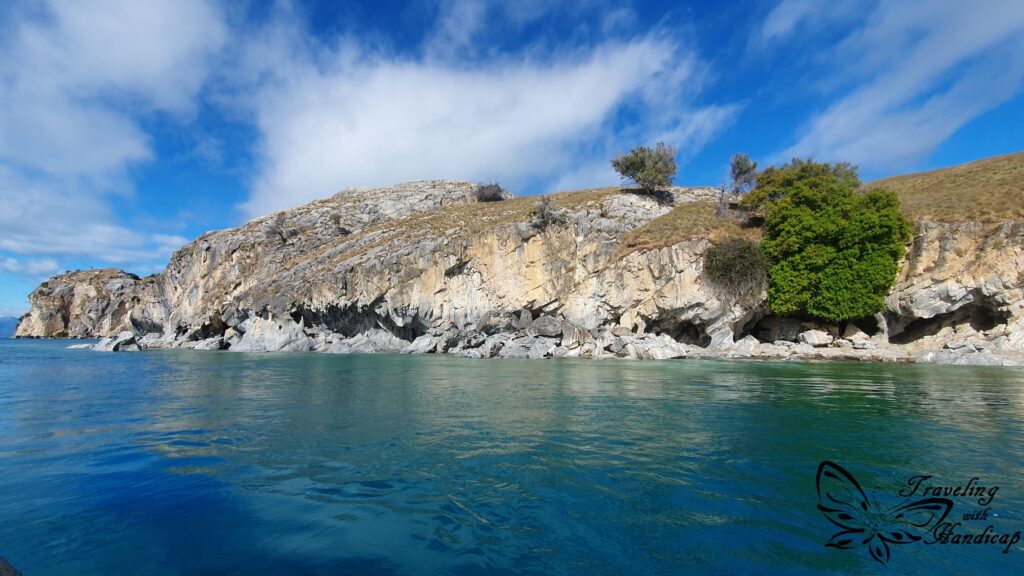
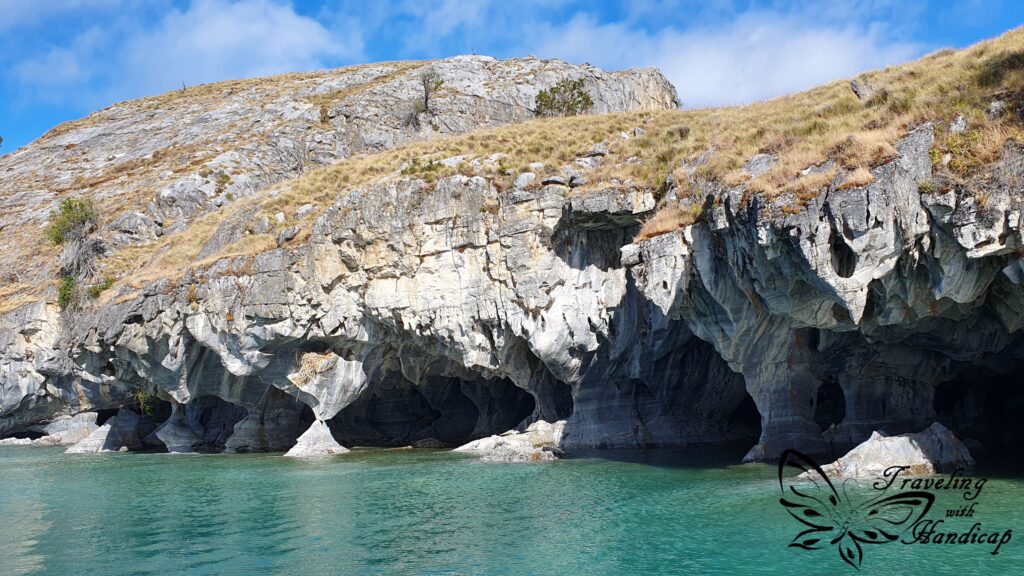

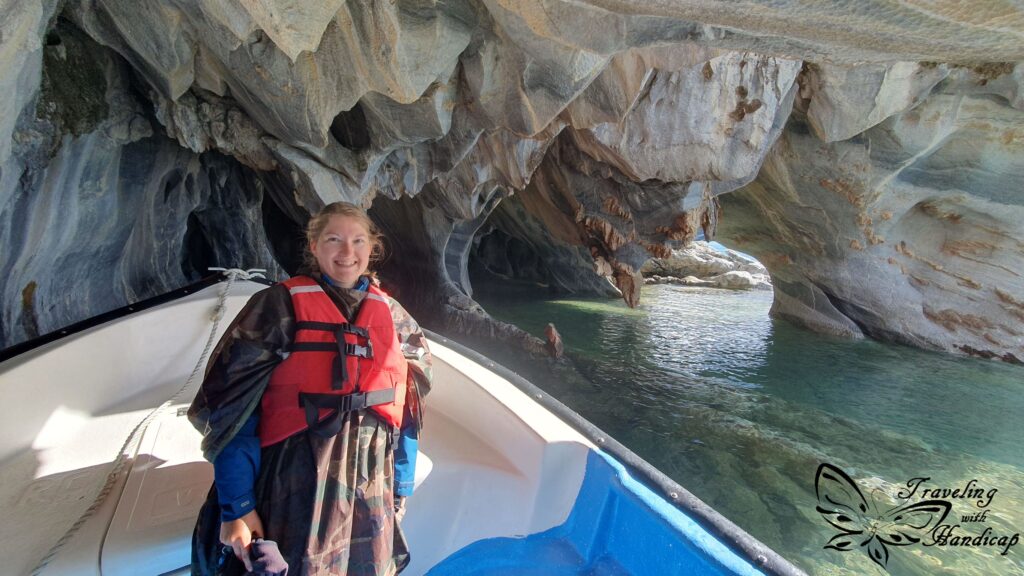
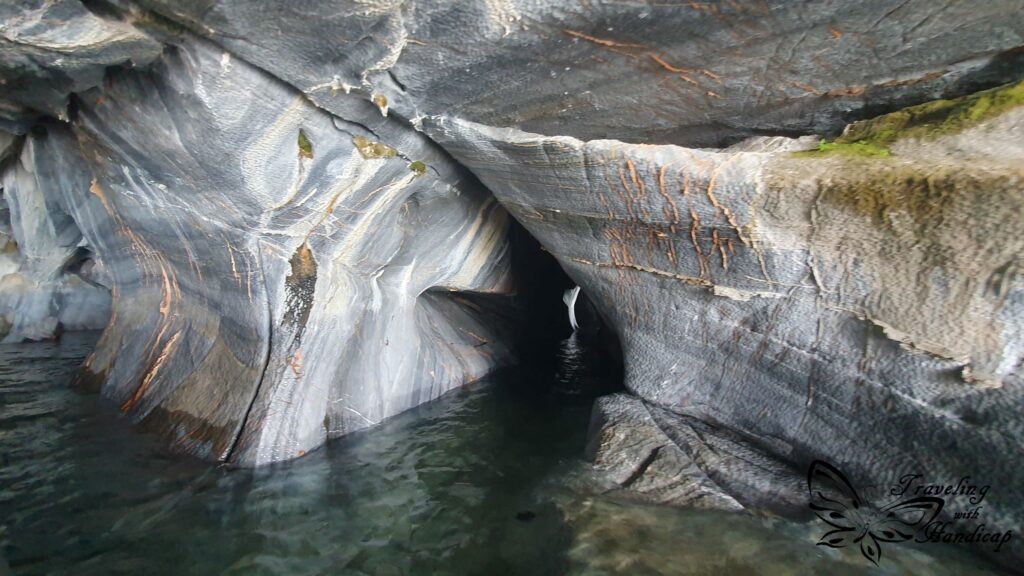
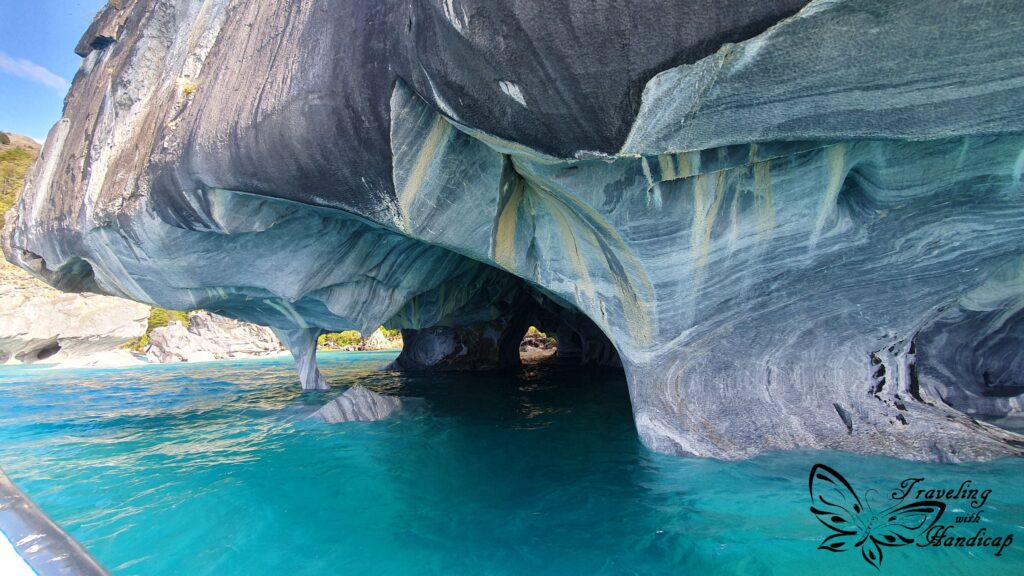
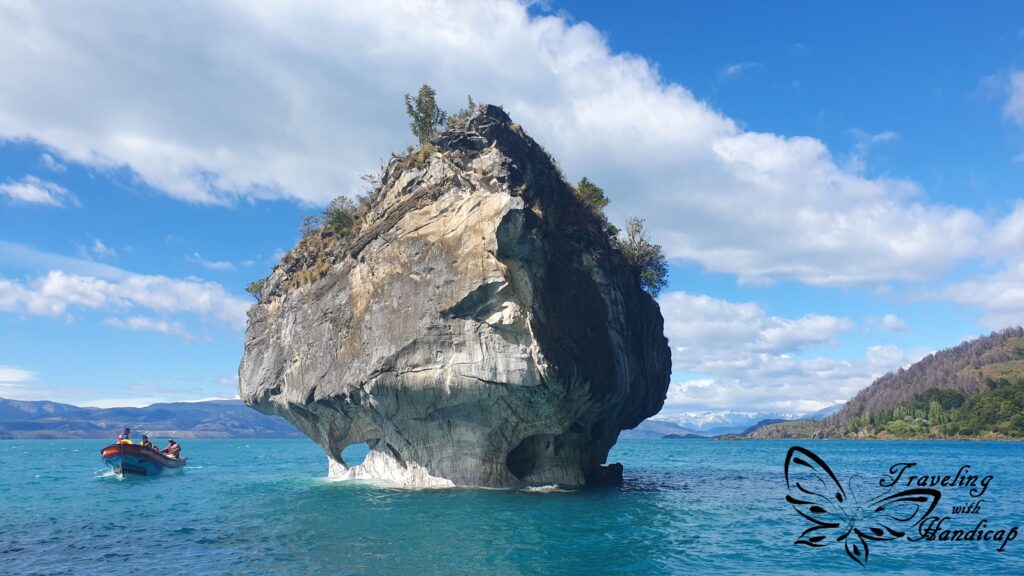

Coyhaique
From Puerto Rio Tranquilo I took a minibus to Coyhaique. At that time, there was a minibus leaving the tiny house called bus terminal at 7am each day. Again, never any people in the terminal, just a WhatsApp number to contact. The bus from Cochrane to Coyhaique also stops in Rio Tranquilo, however, I could neither find reliable information online nor in Tranquilo.
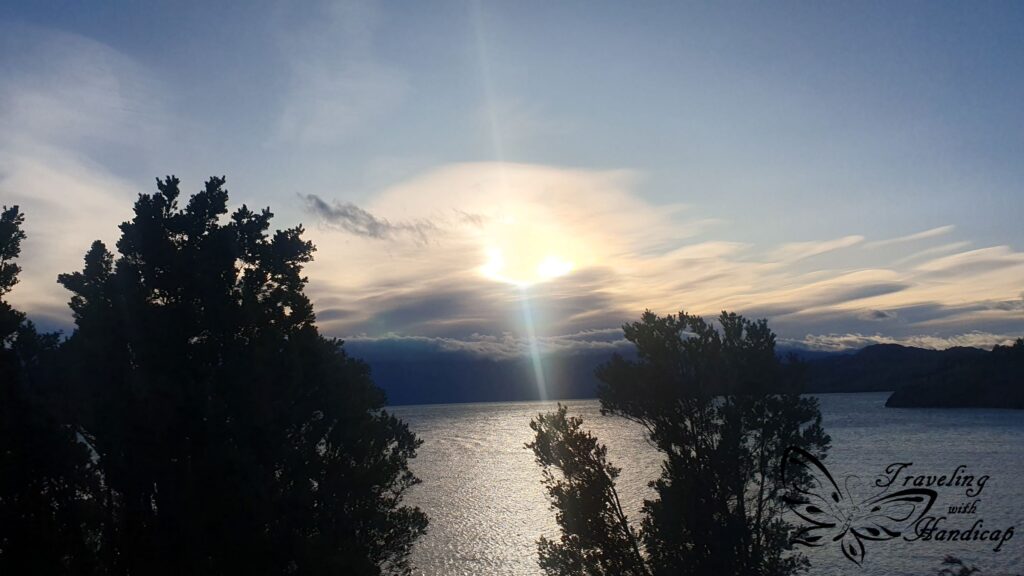
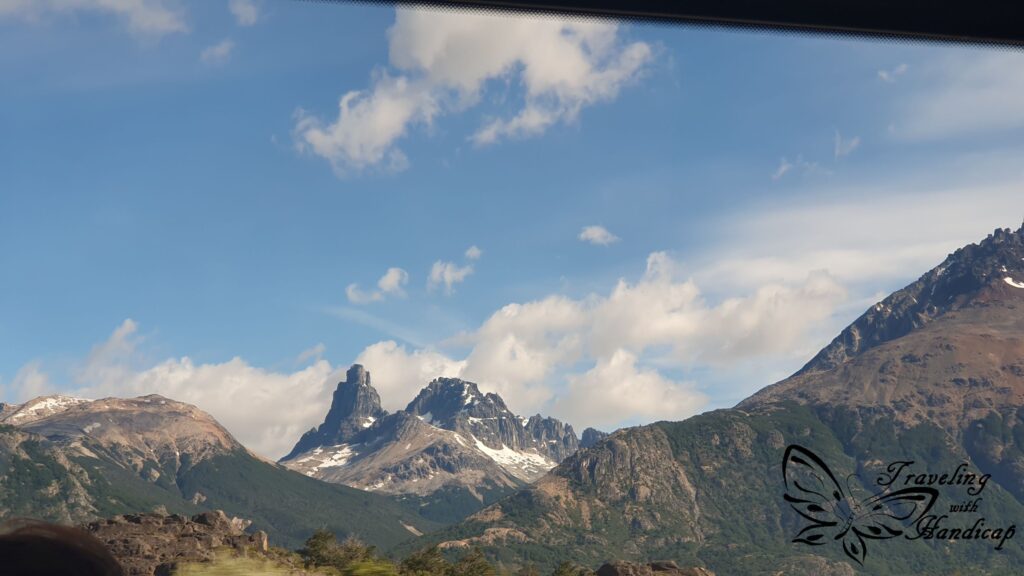
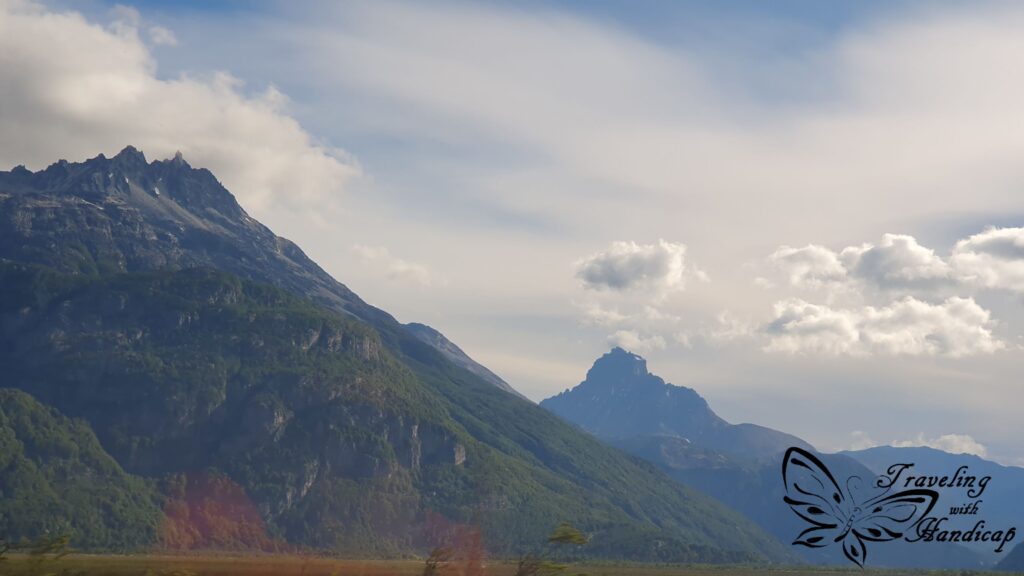
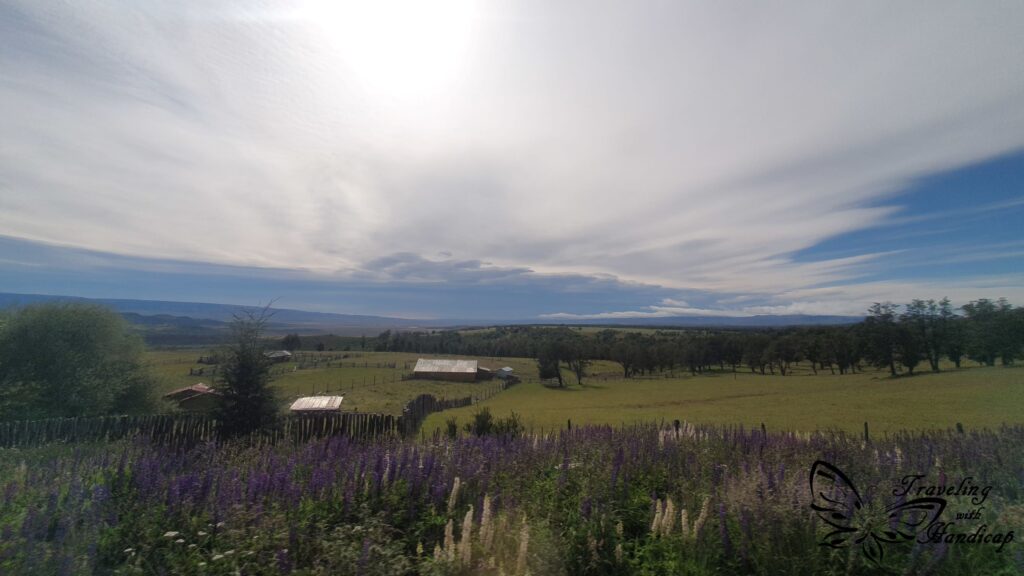
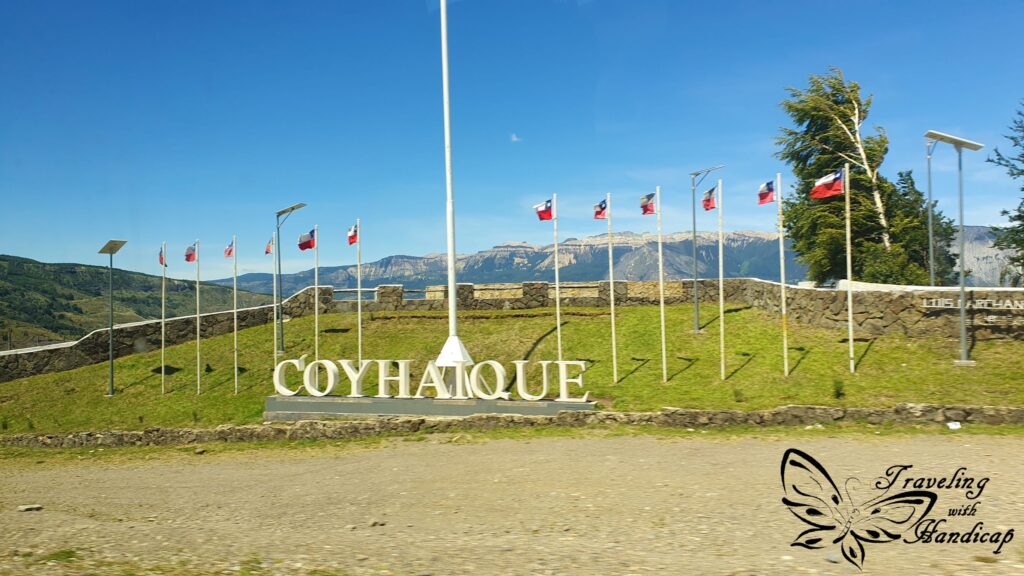

Coyhaique was the only town where I could stay in a hostel. When I walked around town, I liked it a lot more than I anticipated before. Its main street and the center (Placa de Armas) with its park were really cool. Moreover, the houses looked so inviting, with some Alps-touch. Like the shapes, how wood was used, and that I found bakeries selling Kuchen. Coyhaique seems to be the central hub for many small villages around, having a proper bus station.
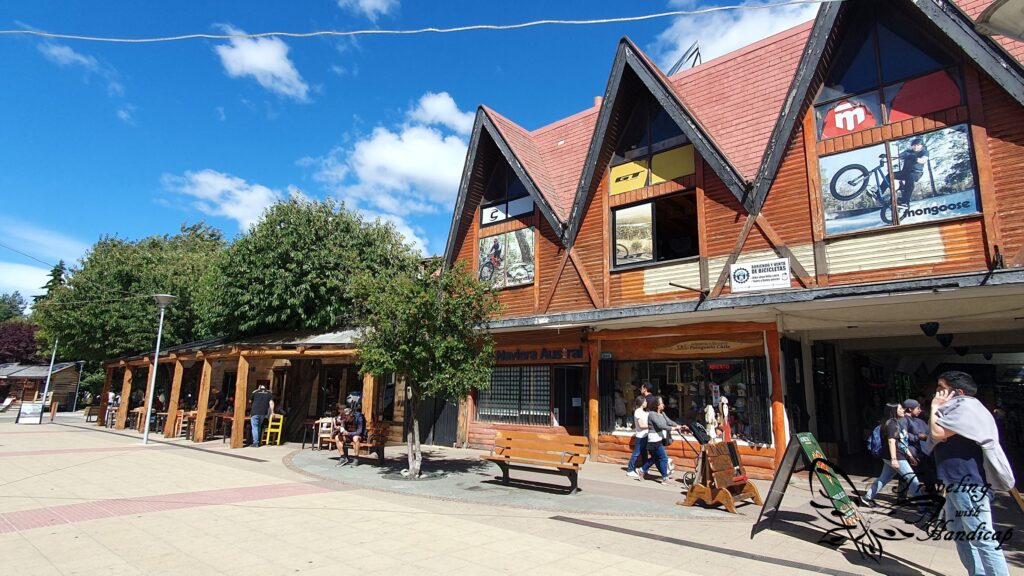
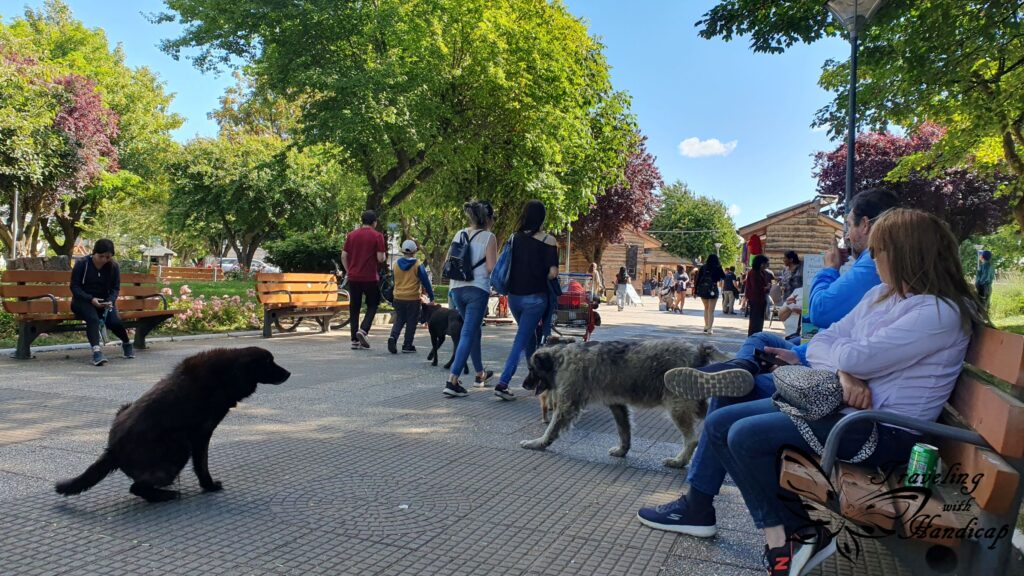

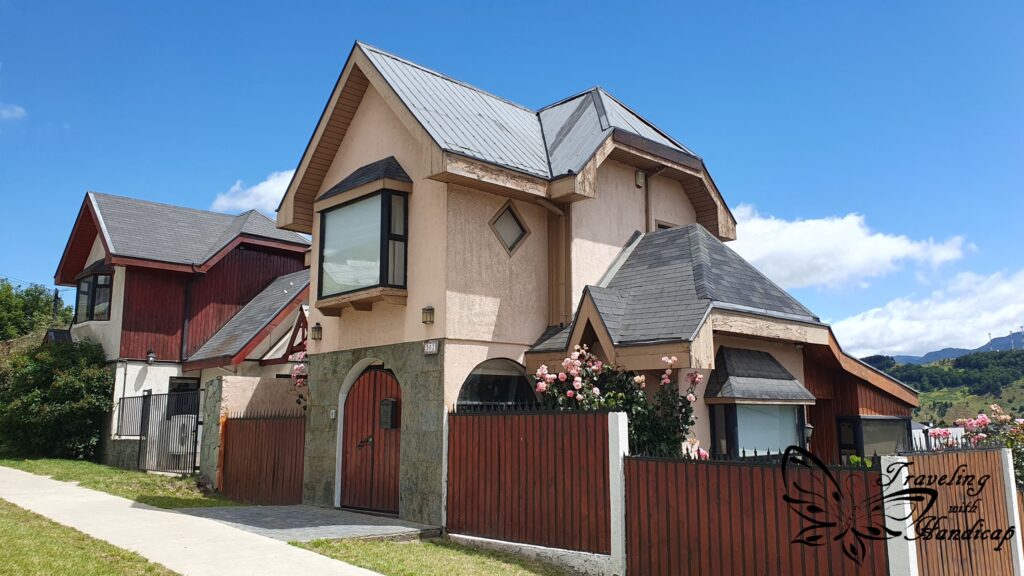
Puerto Aysén
From Coyhaique, I took a return bus to Puerto Aysén (and afterward continued to Puyuhuapi) as a “side-trip”. I initially planned to get from Puerto Aysén to Puerto Chacabuco, take a ferry from there to Puerto Cisnes and from there a bus to Puyuhuapi. The ferry wouldn’t have been difficult to handle, but Aysén to Chacabuco as well as Cisnes to Puyuhuapi would have been hitchhiking or by taxi. Moreover, the accommodation options were expensive. So I decided against this ferry and instead going from Chaitén straight to Puerto Montt (including three beautiful ferry rides) instead of crossing to Chiloé.
I really like Puerto Aysén. It felt like being in “Chilean Switzerland”. Located within a mountain landscape, at a bigger river, not far away from the sea, with houses that reminded me of simple wooden houses of the Alps region. If I had to migrate to Chile one day, I’d most likely pick Puerto Aysén (with my current state of knowledge).


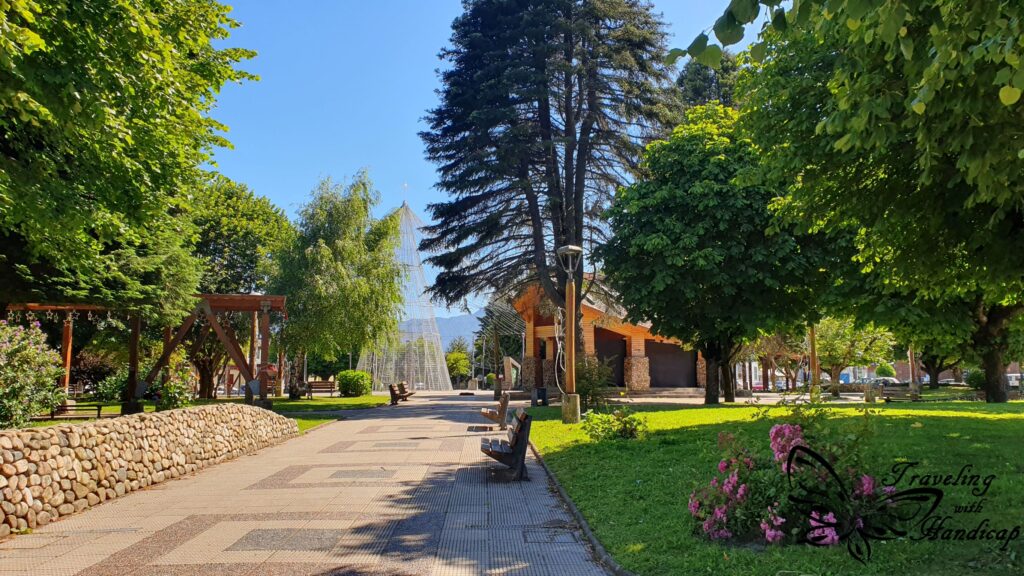
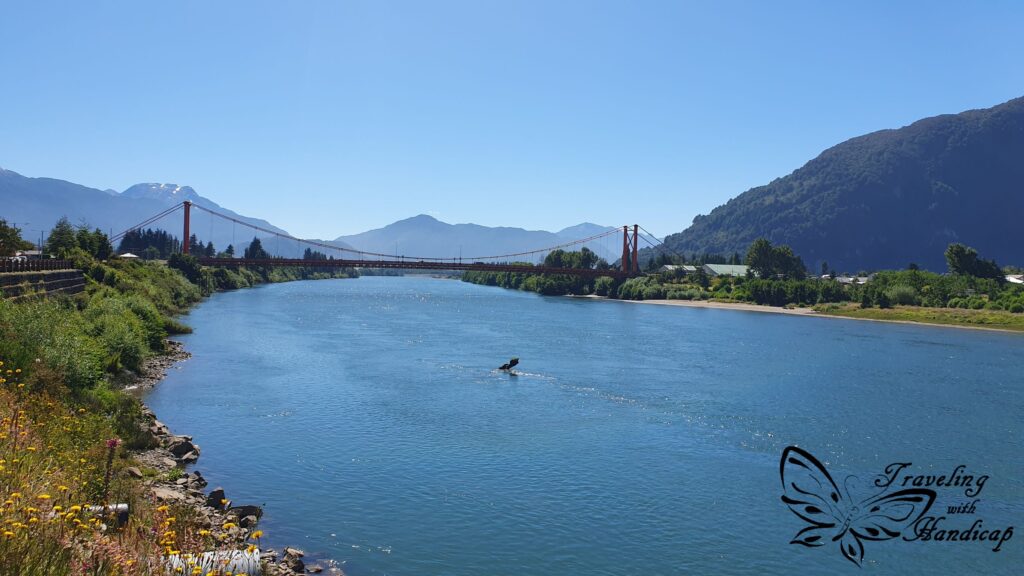

Puyuhuapi
… is a tiny town, once founded by Germans. It’s located at a fjord, so at the ocean instead of a river or lake. The bus ride from Coyhaique, especially the last part through the Queulat National Park, was very scenic (again). I really enjoyed the vibe in this village. Of course, all is set up for tourists. However, as it’s so tiny and with good restaurants, in a very scenic location with a chilled atmosphere, I really enjoyed my two nights there.
In Puyuhuapi, I encountered the first time what I would have for a while: houses built out of wood (“paper”) in which you can hear everything. Sure, I liked the hostal I stayed in, they even offered amazing and filling breakfast (good restaurant!). However, I could hear people of the next rooms snoring. Often, it’s quieter in a dormitory room of a hostel compared to a single room in one of those paper houses.
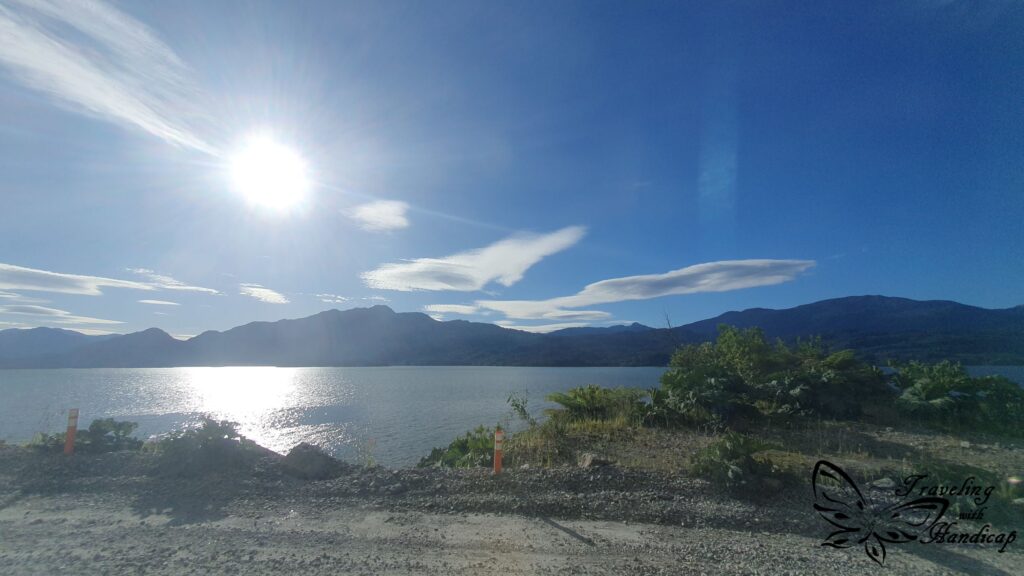

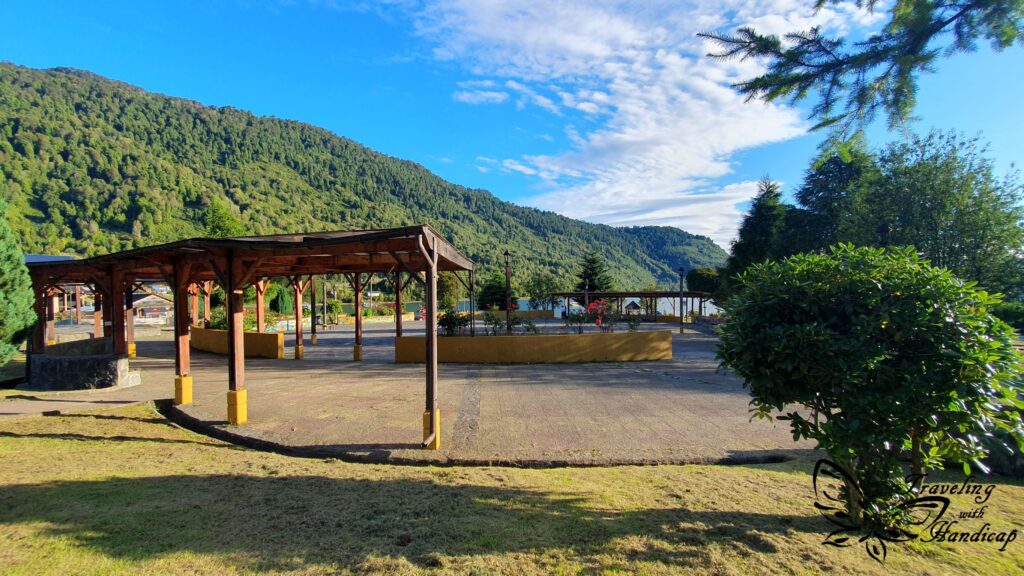
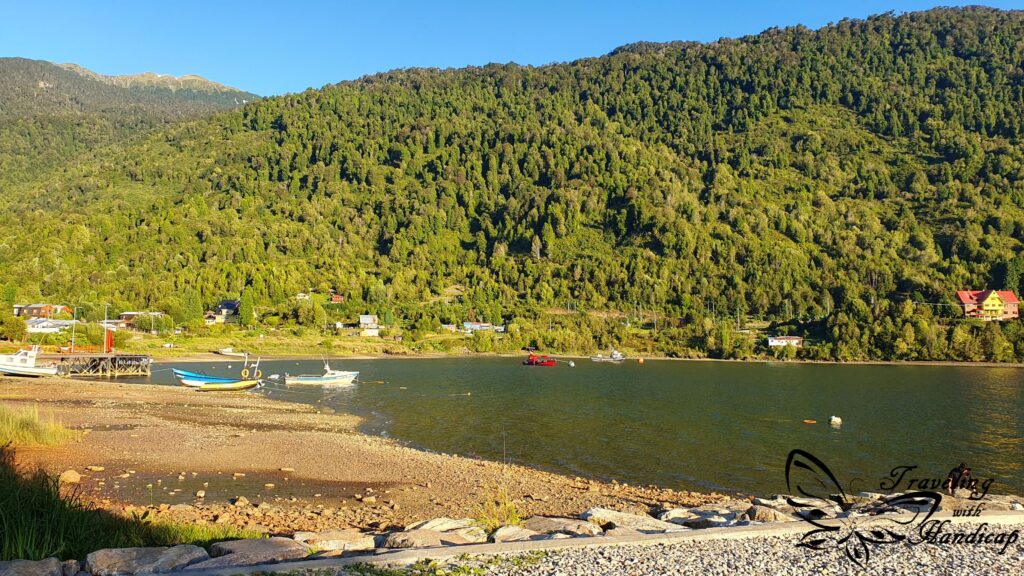

From Puyuhuapi, you may visit the Glaciar Ventisquero, a hanging glacier above a rainforest. Unfortunately, this was the only day until now when I wasn’t lucky with the weather. The clouds were hanging too low, and so we could only see the many water falls, but not the glacier. Nevertheless, I really enjoyed the hike to the viewpoint. Not long, but waterproof shoes are recommended, as the track often passes through water(falls).

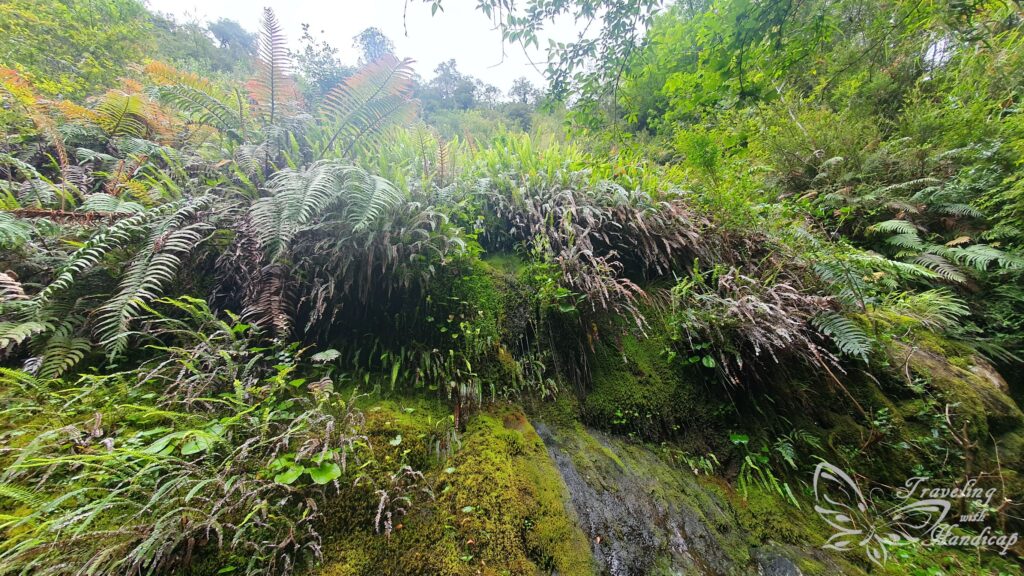


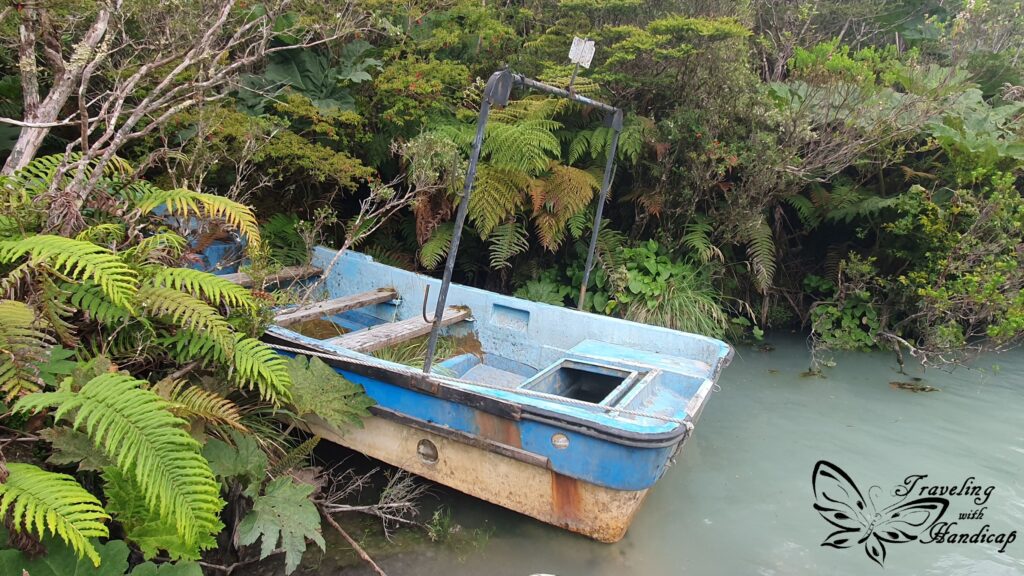
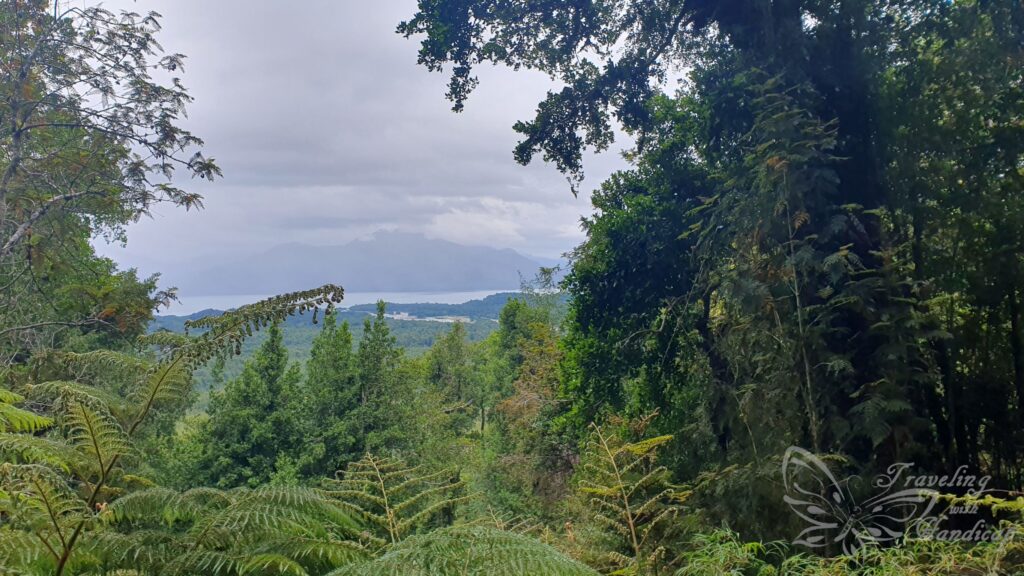
Chaitén
Chaitén was a necessary stop since there was no bus continuing further north. I could have hiked up a volcano from Chaitén which I didn’t do. Mainly because the volcano is not active, and I have already had the Acatenango / El Fuego experience in Guatemala, and it was too cloudy for long distance views.
From my perspective, Chaitén serves as a cross-point, mainly for the ferry to Castro (Chiloé Island) and other ferries down south in the Patagonian fjords. There is not really anything going on otherwise, and I would have skipped it. Some way up north and down south of Chaitén are far more scenic points to stay and camp.
Ferries, Hornopiren & Puerto Montt
The bus ride from Chaitén to Puerto Montt
After Chaitén, I spent my next night in Puerto Montt, finishing the Carretera Austral. I could have made another stop along the way, in Hornopiren. By car, I would have stopped, since it’s a very long way from Chaitén to Puerto Montt, a whole day of driving. On that day, I had to take 3 ferries (by bus), two times for 3o minutes, the long ferry ride took 3.5 hours.
If you drive along the Carretera Austral, it is very important to pre-book the two ferries between Chaitén and Hornopiren, they are quickly filled, especially during high season. If traveling by bus, you don’t have to worry since there is always space for the bus. The ferry rides were so scenic and in calm water, with almost no clouds in the sky. Again, very lucky!
Hornopiren and Puerto Montt
There would be some nature and hiking options around Hornopiren. Even though it looked quite inviting and chilled, I wanted to get to Puerto Montt. I never spent too many nights at one place, and checking in and out almost every day was exhausting after a while. So I was happy to arrive in Puerto Montt at sunset.
Puerto Montt is a transportation hub, checking out the city can be avoided. Everyone I met said that, and the views I had from the bus were sufficient (and confirming those statements). The next morning I took a minibus (every ~7 minutes) from Puerto Montt to Puerto Varas within the Lakes Region of Chile (not part of the Carretera Austral anymore, so another new blog post).


